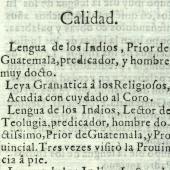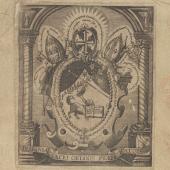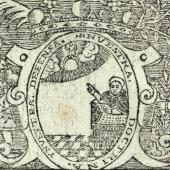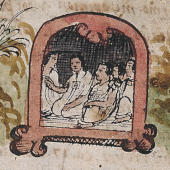A mission in the New World
800 years of Dominican books
Dominican friars were among the earliest missionaries in the ‘new world’ of the Americas during the sixteenth century. The first four established a house at Santo Domingo, the principal settlement in Hispaniola (in what is the modern-day Dominican Republic), in 1509. In the decades which followed, some came as chaplains to the ‘conquistadores’, the Spanish adventurers and colonists. One such was Vincent de Valverde OP who accompanied Pizarro on his conquest of Peru. Many more arrived as would-be missionaries to preach the Gospel among the indigenous peoples. Amongst the most renowned of these friars is St Luis Beltrán, who toiled for some twenty years in New Granada, the region of South America which is now Colombia and Venezuela. From the outset a few became indomitable champions of human rights, seeking to protect the Indians from savage mistreatment by the Spanish. Shortly before Christmas 1511, Antonio de Montesinos OP had preached a now famous sermon at Santo Domingo. Jointly composed by the first four friars in Hispaniola, the sermon vehemently denounced the maltreatment by the Spanish of the indigenous Indians.
As numbers grew, the friars established new houses and provinces. They reached Mexico in 1526, and by 1555 the Province of St James in Mexico numbered over two hundred men in forty houses. A Peruvian province was established in 1540. A province of Chiapas and Guatemala was created in 1551.
Books were written to support the mission, and later to record its history. Bartolomé de Las Casas was a tireless writer who chronicled the injustices suffered by the Indians and advanced arguments for their legal protection. Missionaries who had to learn the many languages spoken across the Americas wrote grammars, dictionaries, and doctrinal primers in these languages. In 1560 Domingo de Santo Tomás OP composed the first Quechua grammar. He had some one thousand five hundred copies printed in Valladolid and shipped out to Peru. At much the same time in New Spain (Mexico), friars collaborated on a Mixtec Doctrina. As the sixteenth century ended and the seventeenth opened, historians such as Antonio de Remesal OP and Agustín Dávila Padilla OP celebrated what had been achieved by their predecessors in part to instil an ideal of missionary endeavour in a new generation of friars.
Image reproduced by kind permission of the Master and Fellows of Trinity College Cambridge.



